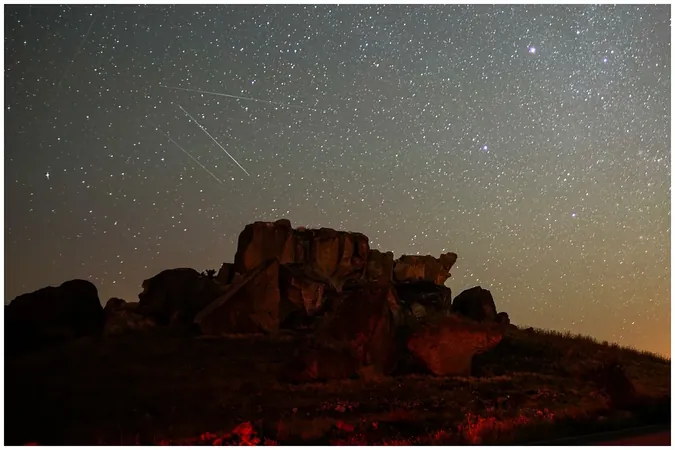
Ultimate Guide to the Best Spots for Viewing the Quadrantid Meteor Shower in the USA in 2025
2024-12-31
Author: Mei
The Quadrantid meteor shower is set to dazzle skywatchers in January 2025, offering one of the most spectacular celestial shows of the year! Anticipated to peak on January 3 at 14:00 ET, this meteor shower promises an impressive display of shooting stars as Earth passes through the debris trail left by asteroid 2003 EH1—a comet discovered in 2003 with a unique orbital period of just 5.5 years around the Sun.
Where to Watch the Quadrantid Meteor Shower: Top Locations Across the USA
To maximize your chances of witnessing this breathtaking event, location is everything! Here are the best tips and spots across the United States for an optimal viewing experience:
International Dark Sky Parks
Look for certified International Dark Sky Parks where artificial light is strictly minimized. Some well-known sites include:
Big Bend National Park, Texas: This park offers clear skies and minimal light pollution, making it a prime location for meteor watching.
Cherry Springs State Park, Pennsylvania: Renowned for its dark skies, this park is a haven for stargazers.
Joshua Tree National Park, California: Known for its stunning desert landscapes and dark night skies.
Away from Urban Lights
The further you can get from city lights, the better your chances of seeing the meteors. Urban areas contribute significantly to light pollution, hindering visibility.
Elevation Matters
Higher altitudes often provide clearer skies. Head to locations like:
Mount Rainier National Park, Washington
Rocky Mountain National Park, Colorado
Optimal Viewing Conditions
Choose a location with a clear, unobstructed view of the horizon and the night sky.
Arrive early to get settled, ideally at least 30 minutes before the peak, and bring a reclining chair or blanket for comfort.
Dress warmly, as January nights can be frigid in many areas.
Viewing Tips
Avoid telescopes and binoculars—they restrict your field of view. Instead, enjoy the spectacle with the naked eye.
Keep your mobile phone off or use only red light; white light can ruin your night vision.
The meteor shower will be best visible near the Big Dipper and the star Arcturus, but you don’t need to focus on them. Simply lie back and enjoy the show!
What Makes the Quadrantid Meteor Shower Special?
Not only is it one of the most intense meteor showers, with rates of up to 120 meteors per hour, but it often features exceptionally bright fireballs. The spectacle is ephemeral; unlike other meteor showers that can last for several days, the Quadrantids put on a brief but blazing show, emphasizing the importance of catching it during peak hours.
Mark your calendars and prepare your stargazing gear for January 2025! This is an astronomical event you won’t want to miss!



 Brasil (PT)
Brasil (PT)
 Canada (EN)
Canada (EN)
 Chile (ES)
Chile (ES)
 Česko (CS)
Česko (CS)
 대한민국 (KO)
대한민국 (KO)
 España (ES)
España (ES)
 France (FR)
France (FR)
 Hong Kong (EN)
Hong Kong (EN)
 Italia (IT)
Italia (IT)
 日本 (JA)
日本 (JA)
 Magyarország (HU)
Magyarország (HU)
 Norge (NO)
Norge (NO)
 Polska (PL)
Polska (PL)
 Schweiz (DE)
Schweiz (DE)
 Singapore (EN)
Singapore (EN)
 Sverige (SV)
Sverige (SV)
 Suomi (FI)
Suomi (FI)
 Türkiye (TR)
Türkiye (TR)